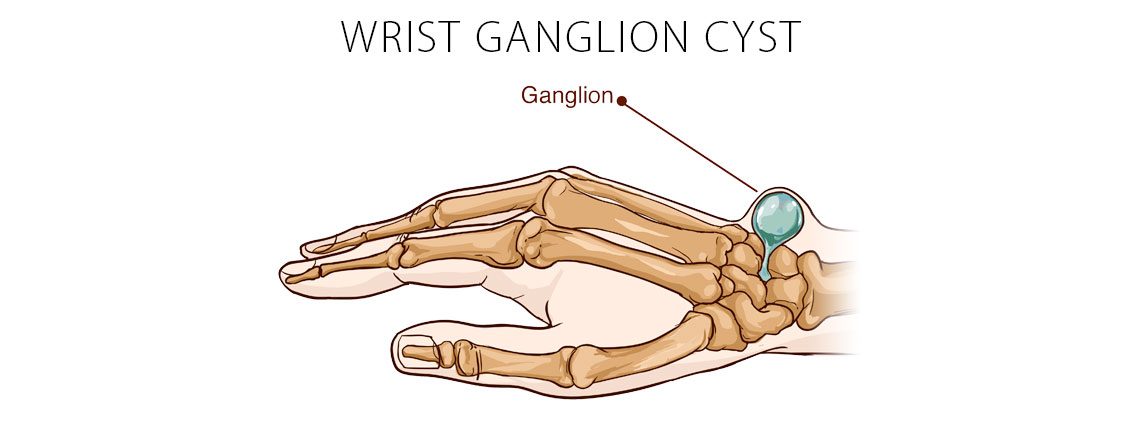
Overview
If you have a noticeable lump on the back of the wrist, fear not, it’s not cancerous and in most cases they’re harmless. These cysts are filled with fluid which can disappear or change sizes over time. This cyst grows out of the tissues and rises out of the joint like a balloon. Inside the cyst is a jelly-like fluid that’s similar to the fluid that lubricates your joints. You may notice the cyst increase in size with increased wrist activity or decrease in size with rest. These cysts don’t require treatment unless they’re painful, interfere with function, or has an unpleasant appearance. The size of these cysts can be as small as a pea-size but grow as large as an inch in diameter.
These occur in women more than men and younger people typically between 15-40 years old. Gymnasts are at an increased risk of having a ganglion cyst due to the frequent stress applied to their wrists.
If your ganglion cyst is located on the nerves you may experience pain, tingling and muscle weakness. However if your cyst isn’t located on any nerves you likely won’t experience any other symptoms other than the visible bump of the cyst.
Nonsurgical Treatment Options
There are several nonsurgical treatments for the ganglion cyst:
- Observation. In an effort to avoid an unnecessary surgery, watch your ganglion cyst to ensure you don’t notice any strange changes. Your cyst may disappear in time.
- Brace. A splint or brace can be used to keep your wrist immobile. This will provide time and space for your cyst to disappear. As your cyst disappears your pain will also disappear.
- Exercises. Exercises can be used to strengthen your wrist and improve your range of motion.
- Aspiration. The cyst fluid can be drained if it causes a great deal of pain or limits your activities.
If you experience symptoms like numbness and tingling, increase in pain and swelling, inability to move the wrist, or severe swelling of the hand or wrist, seek medical attention immediately.

